Posted August 1, 2020
How to Deal with a Flat Tire
Let’s face it – flat tires happen. No matter how careful you may be, any car can succumb to an unexpected flat. But you can be prepared! Car manufacturers have made the tire change process simple so that virtually anyone can do it. And with our guide, you can be confident in your ability to change a flat tire!
Before you head out for a long drive, or even your regular commute, check your spare tire. Flat tires can’t be replaced with flat spares! You can also look at your tires – if you see any worn spots or skimpy tread, invest in new tires. You can even stop by our shop for a full inspection before any big road trips!
But even the most prepared drivers can encounter unexpected flats – not to fear! With this guide, you will be able to change your flat tire in 5 easy steps:
1. Find a safe spot to pull over. Look for a flat spot with a wide shoulder, the fewer cars the better. If you are on the interstate, taking the next exit is usually best if your car is able. Pull over as far onto the shoulder of the road as possible. Avoid parking on a curve where oncoming traffic can’t see you, or hills where jacking up your car can be dangerous. Turn on your hazard lights and set your parking brake!
2. Loosen the lug nuts. Most cars come equipped with a spare tire, simple jack, and lug wrench, so start by gathering these tools from your trunk. A flashlight, gloves, towel or tarp can also be helpful. Start by using the wrench to loosen the lug nuts. You may need to remove the hubcap or plastic covers to access the lug nuts. Do not remove them all the way at this step, but simply loosen. If you lift the vehicle before loosening the lug nuts, the tire will spin when you try to remove them.
3. Lift the vehicle with the jack. Make sure you place the jack in the appropriate place under the car. Some vehicles have marked areas behind each tire – check your owner’s manual for the specific location for your vehicle. Once you place the jack in the right spot, start lifting the car until it is about 6 inches off the ground.
Some vehicles have marked areas behind each tire – check your owner’s manual for the specific location for your vehicle. Once you place the jack in the right spot, start lifting the car until it is about 6 inches off the ground.
4. Place the spare tire. Finish removing the lug nuts from the tire (make sure you keep them in a safe place so you don’t lose any!) and remove the flat tire by pulling straight towards you. Line up the spare tire with the lug nut posts and push it all the way onto the wheel base. Put on the lug nuts and hand-tighten them so that the spare will stay on the car when you lower the jack.
5. Lower and tighten. Use the jack to bring the car back to the ground. Tighten the lug nuts on the spare tire diagonally – tighten one lug nut about half way, then move to the opposite diagonally (across the wheel) and tighten half way, then finish tightening both nuts. Continue using this method to tighten the rest of the lug nuts. This helps to ensure that the tire is on evenly and won’t wobble as you drive.
This helps to ensure that the tire is on evenly and won’t wobble as you drive.
Remember, spare tires aren’t meant to be driven on as far or as fast as normal tires. Drive carefully and head towards our shop to get your tire fixed or a new, full-sized tire put on right away.
Keeping your tires properly inflated and making sure they have a good amount of tread can help avoid the pain and expense of changing and possibly replacing a flat tire.
Categories: Uncategorized
Tags:
Search for:
The rear tire in its flattened state. ? Scotty Reiss
Don’t panic. It’s not as awful as you think.Not long ago I got a call from my daughter, one that all moms dread: “Mom, we have a flat tire! What do we do???”
Both my daughters were in the car and they were panicked. They were on the highway and road flotsam slashed the front tire wide open.
Not all flat tires are created equal; some are easy to fix, others can lead to a bad accident. How you handle it is the key to being safe and ensuring it isn’t a horrible experience.
The Lincoln Aviator I was driving when I got a flat tire. ? Scotty Reiss
It’s Not If You’ll get a Flat, but When, so PrepareThe first thing you definitely need to prepare is a plan for roadside assistance. If your car’s warranty doesn’t have a roadside assistance package, there are other options including AAA’s coverage or coverage through your insurance policy.
The other thing that helps is to have a spare tire, though not all cars come with a spare (it saves fuel over the long term and cash up front in the purchase price). Be sure to know if your car has a spare tire or not.
What you don’t need to do is plan to change the tire yourself. While yes, it’s great to know how to change a tire, the reality is that on the side of the road, perhaps in dark or bad weather, changing a tire is a job for a pro.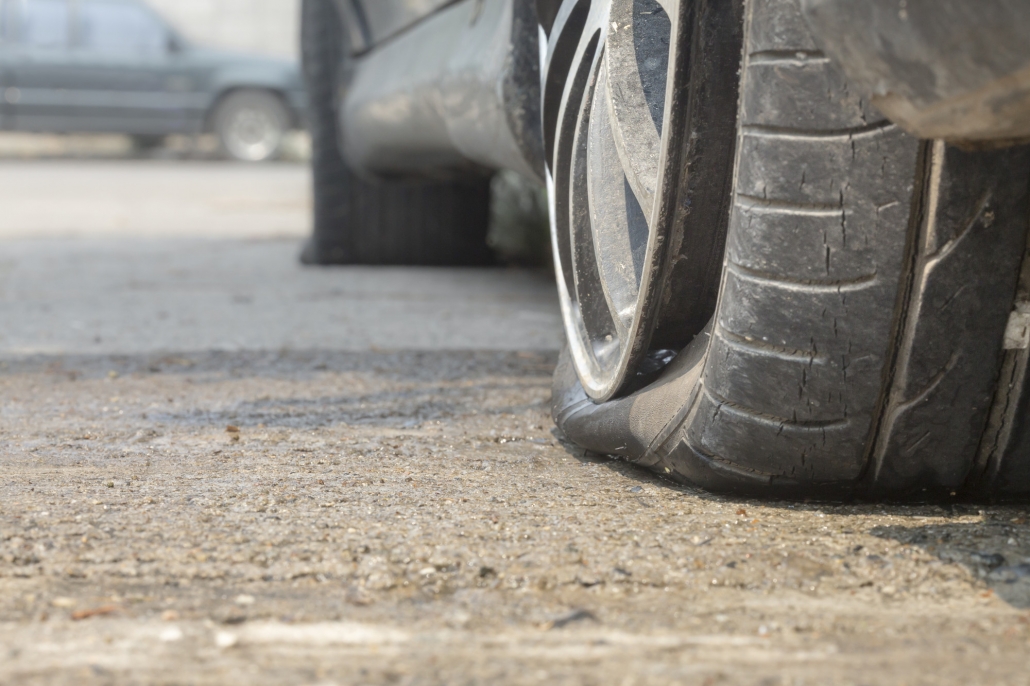 And, many tires are installed with pneumatic tools ensuring lug nuts are super tight. You may need more torque than the gravity of your body weight to get them loose, so even if you know how, you may need the help of a pro.
And, many tires are installed with pneumatic tools ensuring lug nuts are super tight. You may need more torque than the gravity of your body weight to get them loose, so even if you know how, you may need the help of a pro.
The spare tire in its bay under the cargo floor. ? Scotty Reiss
Roadside Assistance Plans Are Great, But Not Created EqualThis is my favorite way to have a flat tire: Dial the number for roadside assistance and then someone comes to fix it.
Most new car warranties include a complimentary roadside assistance plan — with a limited number of years or miles covered, and details of each plan can vary. Generally, they cover the cost of towing to a dealer or repair facility and may cover the cost of swapping your flat for the spare. From there, repairing the tire or getting a new one is on you.
These are great for car dealers because if they tow your car they can service the flat.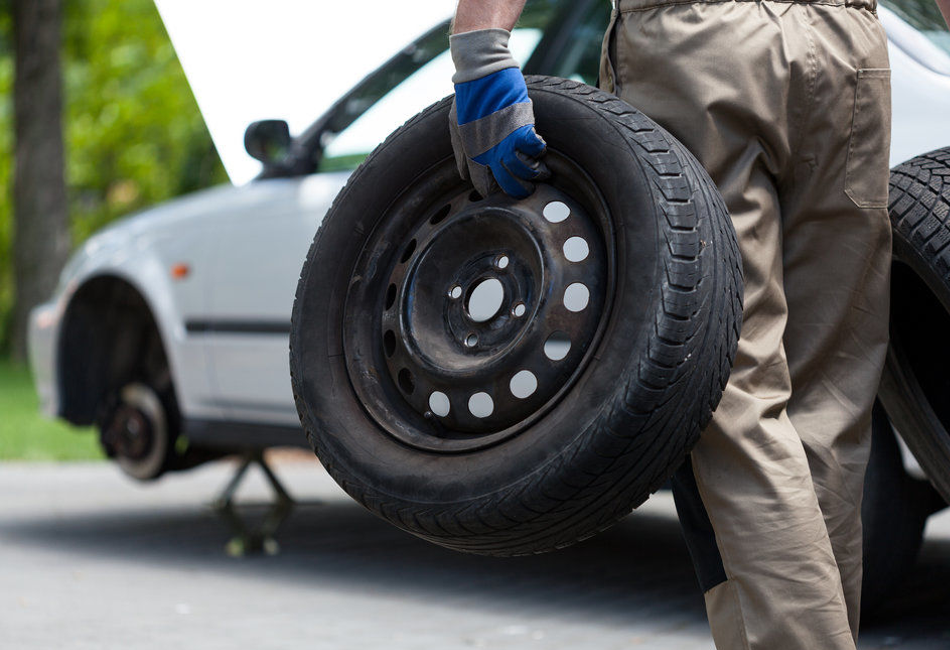 This lets them step in to sell you any additional necessary services—like replacement tires or wheel repairs—rather than a local garage with a tow truck. The upside is your car is cared for by a dealer who is familiar with what your car needs. The downside is that this can be more expensive.
This lets them step in to sell you any additional necessary services—like replacement tires or wheel repairs—rather than a local garage with a tow truck. The upside is your car is cared for by a dealer who is familiar with what your car needs. The downside is that this can be more expensive.
If your car doesn’t have a roadside assistance or the plan has expired, AAA’s plan works in a similar way. Insurance plans vary and can include other benefits like trip interruption reimbursement and coverage for damage to your vehicle, which a manufacturer’s warranty may or may not cover.
The technician working on changing the tire. ? Scotty Reiss
First Things First: How to Know Your Tire is FlatThis might seem obvious but it might not be. In fact, if the tire pressure monitor hadn’t gone off I might not have known I had a flat. I was driving slowly on downtown streets and the car felt pretty normal.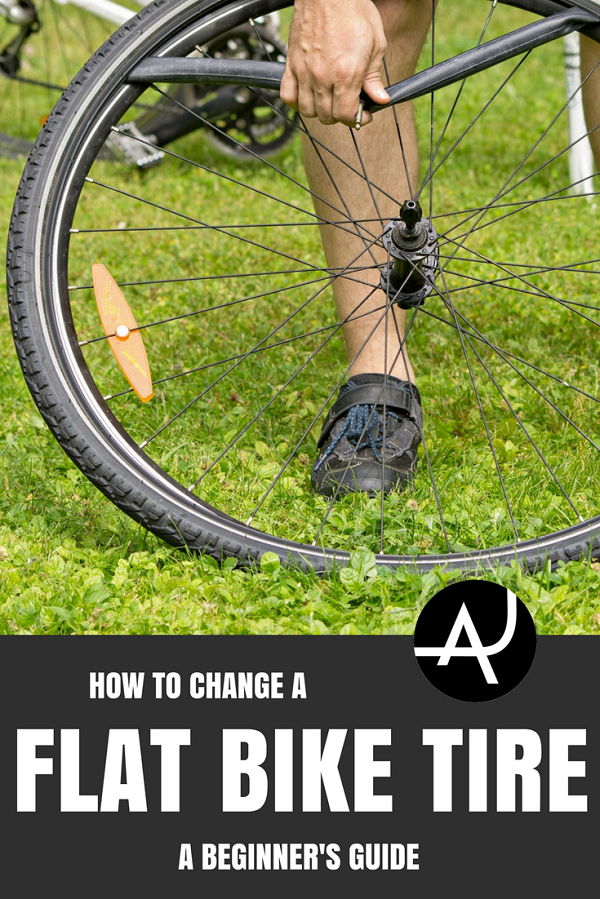 Once the TPMS light flashed on the dashboard I was sure I had an issue, but the feeling and sound were only very slight.
Once the TPMS light flashed on the dashboard I was sure I had an issue, but the feeling and sound were only very slight.
If you’re not sure if you’ve had tire damage, slow down, listen and feel for anything unusual while you find a safe place to pull over to inspect your tires.
Roadside assistance tire change in progress . ? Scotty Reiss
Slow Down, Maintain Control and Find a Safe Place to ParkIf you think your tire is flat, the first thing to do is to slow down, put your flashers on and pull over to a safe place— ideally off the road or highway. If you can exit the highway, all the better. Don’t drive very far or fast on a flat tire or you risk ruining the tire rims; these cost a lot more to replace than just the tire.
If you’re on the highway—and that is a common place for tire damage to occur—pay close attention to controlling the car. Without a fully functioning tire you can lose all wheel drive capability and other safety functions like lane keep assist and the car can be more difficult to steer.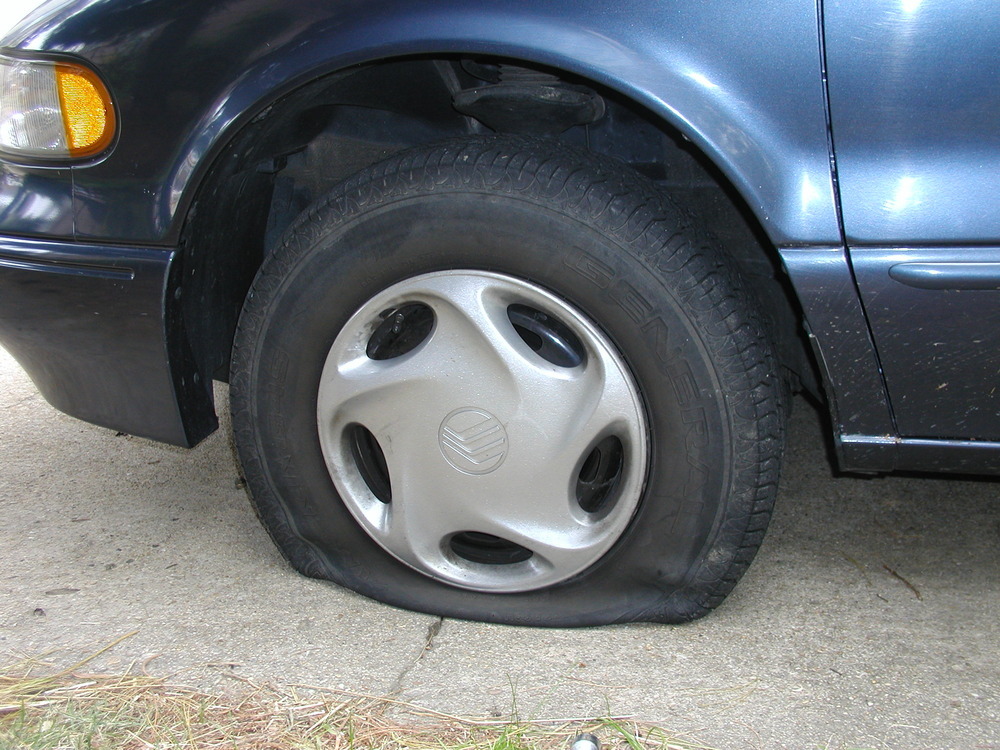
Text messages from Lincoln’s road side assistance desk kept me apprised of the technician’s arrival time. ? Scotty Reiss
Call Roadside AssistanceOnce you’re in a safe place call for roadside assistance. Be sure to keep the number in the car or glovebox or better, in your phone’s contact list. If you don’t have it at hand, you can also search on a smart phone. When my daughters called in a panic I told them the number would be in the information in the glove box. While they looked, I Googled Hyundai’s roadside assistance number and texted it them faster than they could find it in the manual.
When I had a flat tire during a week-long test drive in the Lincoln Aviator, I was easily able to find the number for Lincoln’s road side service right inside the manual cover. I called and operators quickly located a repair service and had a repair person quickly dispatched. I waited about 30 minutes for the technician to arrive.
Hyundai’s service took a bit more time since my daughter’s car didn’t have a spare.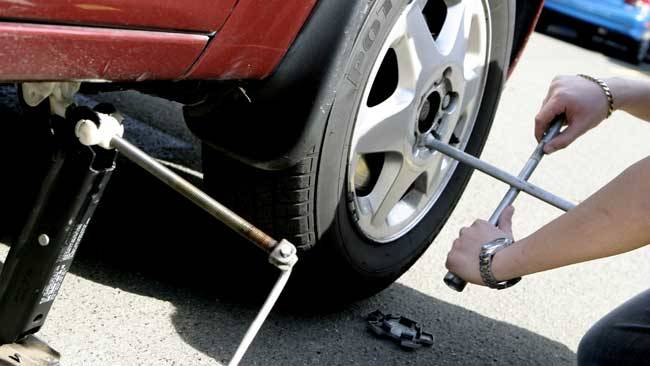 Her car had to be towed so the operator had to locate a dealership and with an available tow truck.
Her car had to be towed so the operator had to locate a dealership and with an available tow truck.
The technician’s car surprised me a Prius rather than a truck. ? Scotty Reiss
What Happened After I Called Roadside AssistanceAfter I spoke with Lincoln’s roadside assistance operator I got several text messages letting me know the location and estimated time of arrival of the technician. It took him about 30 minutes to get to me, which was fine; I’ve waited longer before. I was lucky to be in a parking lot at a bank during the day; had it been at night I would have stayed in the car with the doors locked and on the phone with my husband.
Once the technician arrived — I expected a truck but he was driving a Toyota Prius!— he assessed the situation and got to work swapping the tire for the spare. The spare tire is actually a spare wheel and tire; he removed the flat and replaced it with the spare.
Luckily I didn’t have anything in the cargo area of the Aviator; if I had I would have had to move things around both to remove the spare tire and to accommodate the flat.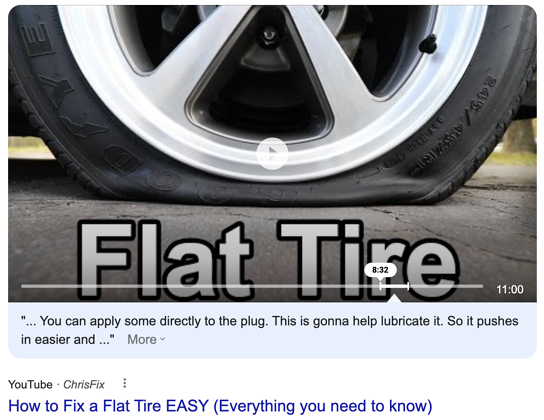 At 22” it takes up a lot of space but it fit in the cargo area with the third row folded flat.
At 22” it takes up a lot of space but it fit in the cargo area with the third row folded flat.
A warning on the spare tire. ? Scotty Reiss
Driving on a Spare Tire — Another Caution to ConsiderJust 15 minutes later and I was on my way. I had about an hour drive on the highway to get home. The spare tire can go the distance but not at the same speeds I am used to for highway driving. Spare tires have a suggested speed limit of 50 MPH; I could drive closer to 60 but not much more. If I forgot and drove faster I found the car harder to control.
And, not all the driver assist features work when the spare tire is in use. I noticed that the all wheel drive, adaptive cruise and lane keep assist functions didn’t work. The system detected the difference in wheel sizes and since this is not as predictable and demands control from the driver, the systems were not available.
Fixing the Problem with New TiresYes, I said tires. Often, when replacing a blown tire you need to think about replacing two tires—the damaged tire and its same-end-of-the-car companion. This will ensure even wear and performance of the tires. And, consider going to your dealer to have the tire or tires replaced. I have heard some owners say the the dealer had to reset car’s computer to ensure the the driver assist and safety features are working properly.
This will ensure even wear and performance of the tires. And, consider going to your dealer to have the tire or tires replaced. I have heard some owners say the the dealer had to reset car’s computer to ensure the the driver assist and safety features are working properly.
If you’re worried about the added expense of buying tires from a dealer, you can research the tires you need and find the best price, then ask the dealer to match that price or you can buy them on line and have them shipped to the dealer.
And be sure the spare goes back into its bay. So it’s there for you next time … which hopefully, will be never!
Journalist, entrepreneur and mom, Scotty likes to say the automotive business found her, she didn't pursue it. But recognizing the opportunity to give voice to powerful female consumers and create a voice to match their spending power, her mission became to empower women as car buyers and owners.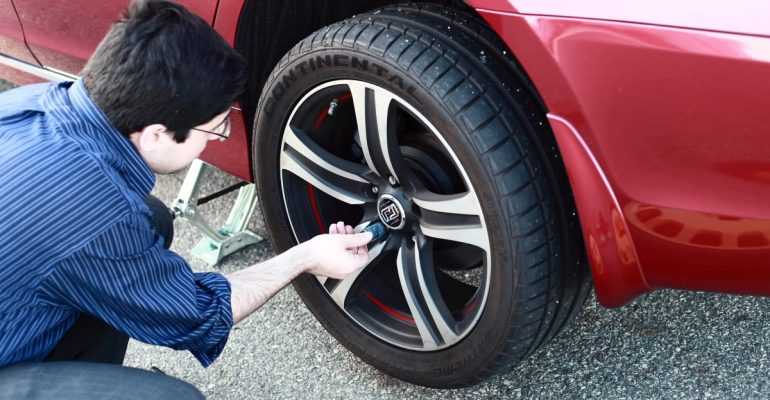 A career-long journalist, she has written for the New York Times, Town & Country, Adweek and co-authored the book Stew Leonard, My Story, a biography of the founder of the iconic grocery company Stew Leonard’s. Her love of cars started when her father insisted she learn to change the oil in her MG Midget, but now it mostly plays out in the many road trips taken with her family.
A career-long journalist, she has written for the New York Times, Town & Country, Adweek and co-authored the book Stew Leonard, My Story, a biography of the founder of the iconic grocery company Stew Leonard’s. Her love of cars started when her father insisted she learn to change the oil in her MG Midget, but now it mostly plays out in the many road trips taken with her family.
Maxim Stroker
Anything happens on the road, including punctures, cuts and other damage to tires. Most automakers are trying to complete their cars for the Russian market, if not with a full-fledged spare wheel, then at least with a "roll-out". However, some car models instead receive only a can of “anti-puncture chemistry”, which, after pumping into the wheel, in theory, should close up a hole in the rubber by itself. However, it happens that either the "stowaway" with the "reserve" was out of order even earlier, or the hole in the wheel is such that no magic "chemistry" can cope - for example, in the case of a side cut.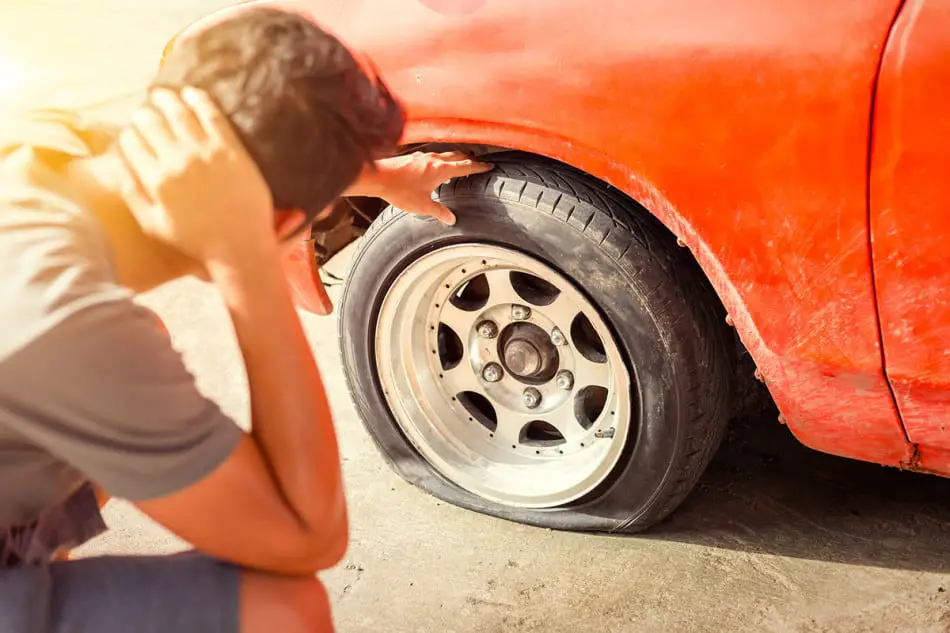 And what to do in such a situation? Somehow you need to get to the tire fitting!
And what to do in such a situation? Somehow you need to get to the tire fitting!
The question immediately arises: is it possible to somehow get to this roadside establishment on a flat tire? In some cases, yes, this is acceptable. For example, when the rubber received relatively little damage, that is, a hole through which air escapes not immediately, but after some time. In this case, it is important to remember that you can ride on the wheel without fear of damaging the rubber exactly as long as there is at least a thin layer of air between its part adjacent to the ground and the disk. This means that if we inflate the wheel to the maximum and drive quickly, then we will have every chance to get to the tire fitting point under our own power - "short dashes", with periodic stops for new pumping of the deflating wheel.
Of course, you don’t need to drive fast, avoid holes and bumps, and also don’t make sudden maneuvers - firstly, so as not to lose control of the car and not disassemble the flat tire. But if there is no air gap between the rubber and the disk, you cannot ride on a flat tire. In this case, the metal of the disk will roll directly over the rubber, "chewing" and cutting its surface from the inside, damaging the cord and so on. In other words, in case of serious damage to the wheel, when no matter how you pump it up, and the air returns to the atmosphere without lingering inside, you cannot drive on a flat tire.
But if there is no air gap between the rubber and the disk, you cannot ride on a flat tire. In this case, the metal of the disk will roll directly over the rubber, "chewing" and cutting its surface from the inside, damaging the cord and so on. In other words, in case of serious damage to the wheel, when no matter how you pump it up, and the air returns to the atmosphere without lingering inside, you cannot drive on a flat tire.
Come on, you can do it slowly, but only if you are ready to throw it away literally after a kilometer of such a ride. In this case, to get to the tire shop, you will have to use the services of a tow truck. Or, if you accidentally had an emergency kit for self-repair of punctures in your trunk, you can dismantle the wheel and, remembering your grandfather's skills of independent tire fitting, fix the tire with your own hands.
Why is it pointless to buy even good Chinese shock absorbers
399296
Why it makes no sense to buy good Chinese shock absorbers
,0008 399296Sign up to the Avtsyzgazing channel:
9000 9000 9000 9000 9000 Zenrepair
Vladimir Gavrilov
Estimated reading time: 4 minutes
8763
Category: Driving technique
Cars often get stuck in wet snow and begin to skid helplessly. How to get out of the trap without resorting to special equipment, such as a winch, rope and snow chains?
How to get out of the trap without resorting to special equipment, such as a winch, rope and snow chains?
Abundant snowfalls and thaw turn courtyard areas into a snow trap. The softened snow is pressed through, and the outgoing transport rolls deep ruts. The longer the winter, the deeper they get. As a result, a simple entry and exit turn into a test for equipment. On flat areas, you can skid so much that you have to tinker hard until you pull the car onto a free road. How to seamlessly bypass the rut?
Often after snowfalls you see how during slippage some motorists turn the wheels until the clutch burns out. Others are more cautious and try to rock the car. If this does not help to get out, then they put planks, branches of shrubs and rags from the nearest garbage cans under the wheels. But such devices do not always work. Experienced drivers who are well acquainted with the peculiarities of Russian winters advise getting out of captivity in a different way: on flat tires.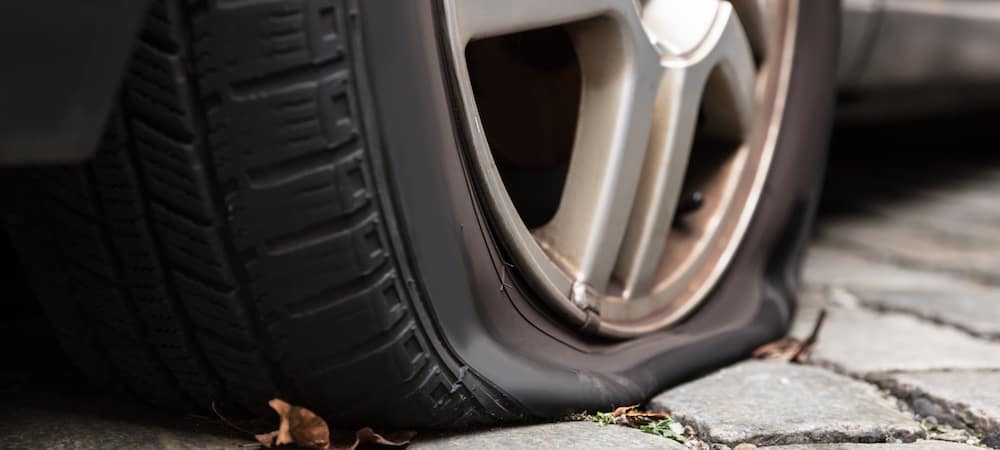
If the yards are cleaned even a little and the main problem is hollows and ruts where the wheels are hopelessly slipping, then you can deflate the tires halfway. Enough about 1.2-1.0 atmospheres to get a good hold. About the same pressure is used by jeepers to travel through mud and sand.
The physics of the process can be described as follows. A half-flat tire becomes limp and spreads under the weight of the car. The contact patch increases, and with it the pressure of the machine on the surface decreases. But the main thing is different. The flattened rubber forms an additional lip that works like snow chains wrapped around a tyre. The edge cuts into the ice and prevents the wheel from slipping. In addition, an additional shoulder of force is created, the rubber adheres more closely to the surface, breaks through the water film, scratches behind the ice tread and creates friction force. The larger the rubber edge, the less likely it is to break the wheels into slip.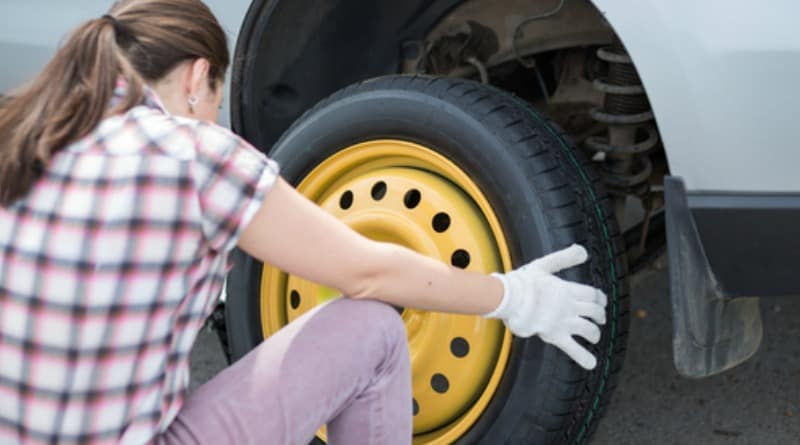 Therefore, on half-flat wheels, the car is easier to get out of a slippery rut.
Therefore, on half-flat wheels, the car is easier to get out of a slippery rut.
But rutting is a danger not only at home, but also on an intercity highway. The track there is much smaller and only about two centimeters high, but its tortuosity and torn edges cause problems with directional stability. Due to transverse vibrations, yaws are formed. For example, a car rushes straight, and then gets into a section with torn edges and rushes about in shaking, so much so that the steering wheel breaks out of your hands. It happens that due to vibrations, the front wheels jump out of the rut, while the rear ones remain in it. At this point, the car may skid. And it depends only on the skill of the driver whether he can straighten the car.
Yaw problems can be alleviated by lowering tire pressure. If the tires are inflated to about 1.5 atm, then they react less to buildup and, due to softness, smooth out side slips that cause yaws. True, it is impossible to accelerate on under-inflated wheels over 80 km / h. Otherwise, a tire that has lost its rigidity during sudden braking or during lateral overloads can break and jump off the rim, which will lead to a sharp drop in pressure and loss of control.
Otherwise, a tire that has lost its rigidity during sudden braking or during lateral overloads can break and jump off the rim, which will lead to a sharp drop in pressure and loss of control.
Under-inflated wheels are also useful for driving on snow. For example, if the driveways to rural houses are skidded, but you need to get to the dacha, then you can lower the tire pressure to 0.5 atm. Then the contact patch of the wheels will increase by more than one and a half times and the pressure on the surface will decrease. The car will fall through less and be able to drive through a snowy area. The owners of off-road vehicles are aware of this technique and travel on flat tires not only on virgin snow, but also on loose sand.
True, with such pressure it is absolutely impossible to slip and accelerate over 40 km / h, since tires that are three-quarters flat cease to hold loads and can be easily disassembled if the accelerator is inaccurately acted upon. As soon as the snow-covered area has been passed, the pressure must be raised again to the values prescribed by the instructions.